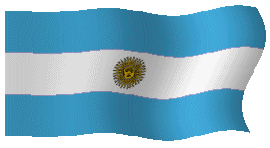
B"H
Jewish  Tours
Tours
 Buenos Aires, Argentina
Buenos Aires, Argentina

|
What is Travelers’ Choice?
Tripadvisor gives a Travelers’ Choice award to accommodations,
attractions and restaurants that consistently earn great reviews
from travelers and are ranked within the top 10% of properties
on Tripadvisor.
¿Qué es el premio Travellers' Choice?
Tripadvisor les otorga el premio Travellers' Choice a los
alojamientos, las atracciones y los restaurantes que
consistentemente reciben excelentes opiniones de los
viajeros y que se clasifican dentro del 10% de los
establecimientos más populares en Tripadvisor.
|
When did Adolf Hitler visit the USSR?
HISTORY SEPT 14
2020
BORIS EGOROV
The Nazi leader not only flew to the occupied
territories of the Soviet Union on short visits, but lived there for months on
end.
Malnava, Latvian SSR, July 1941
Almost a month after the start of
Operation Barbarossa, Adolf Hitler flew to the occupied Latvian Soviet Socialist
Republic. Here, inside an agricultural school in the village of Malnava in
eastern Latvia, was the headquarters of the commander of Army Group North, Field
Marshal Wilhelm von Leeb.
Dpoikans (CC BY-SA 3.0)
The Fuhrer spent
around five hours in Malnava, discussing the war situation with von Leeb and the
further offensive on Leningrad. “In the morning, I noticed a huge security
presence outside my window,” recalled local resident Viesturs Skidra: “There
were soldiers every ten paces. Someone joked that Hitler would appear. And he
did!”
Brest Fortress, Belarusian SSR, August 1941
On August 26,
1941, Adolf Hitler, accompanied by Italian leader Benito Mussolini, visited
Brest Fortress bordering the Reich in western Belarus. It was here that the
Wehrmacht suffered its first appreciable losses, having encountered unexpectedly
fierce resistance from the Red Army.
The Fuhrer decided to personally
investigate what had happened, and at the same time to demonstrate to Il Duce
that the might of the German armies was capable of smashing the desperate
heroism of the Russians. The two dictators were accompanied by Luftwaffe
Commander Hermann Goering, Foreign Minister Joachim von Ribbentrop, and Chief of
the General Staff of the Italian Armed Forces Ugo Cavallero.
Szeder
László (CC BY-SA 3.0)
Although the Germans seized the fortress in the first
few days of the war, the resistance of the scattered Soviet units continued well
into July. For Hitler's visit, the entire territory was raked with a fine-tooth
comb to avoid unpleasant surprises. In addition, the fortress was cordoned off
by an SS battalion from Hitler's personal guard, which did not even let German
military personnel through, never mind civilians.
Curiously, while the Third
Reich leaders were studying the heroism of the Soviet soldiers at Brest, no one
in the USSR itself knew anything about it. They learned about the exploits of
the fortress defenders only in February 1942, when the Red Army captured the
archive of the Oryol-based headquarters of the Wehrmacht’s defeated 45th
Infantry Division, which had taken part in the assault.
Werwolf headquarters,
Ukrainian SSR, 1942-1943
Not all of Hitler’s visits to the occupied
Soviet territories were short. For longer stays, several command posts were
purpose-built. Collectively, these were known as the Führerhauptquartier (Fuhrer
Headquarters).
The Werwolf (Werewolf) bunker was constructed in a forest near
the city of Vinnytsia in central Ukraine, and consisted of three reinforced
concrete bunkers and 81 ground structures. Besides a power station, there were
two radiotelegraph stations, a canteen for the high command, military barracks,
and even a cinema, swimming pool, and casino.
Like all of Hitler's
bunkers,Werwolf was well-protected by rows of barbed wire, pillboxes,
minefields, artillery, anti-aircraft guns, and fighters stationed at a nearby
airfield. The partisans operating in the nearby forest were aware of the
significance of Werwolf, but powerless to take it out.
Hitler spent a total
of 138 days at his headquarters in Ukraine: from July to October 1942, and in
February-March and August-September 1943. It was here that the fateful decisions
to attack Stalingrad, the Caucasus, and Kursk were taken, which ultimately
determined the outcome of WWII.
Håkan Henriksson (CC BY 3.0)
When in
September 1943 the Red Army began to cross the Dnieper River, Hitler left
Werwolf. The bunker was transferred to the commander of Army Group South, Field
Marshal Erich von Manstein, who remained there until the end of the year. In
March 1944, the complex was blown up.
Bärenhöhle headquarters, RSFSR,
November 1941 and March 1943
The more modestly sized Bärenhöhle (Bear's
Lair) at Smolensk received Hitler only twice: in November 1941 and March 13,
1943. It is a little-known fact that on that March visit, one of the
participants in the conspiracy against the Fuhrer, Major General Henning von
Treskow, planted a bomb on his plane, but the explosive device failed.
Most
of the time, Bärenhöhle was used by the command of Army Group Center. In the
fall of 1943, a month before the arrival of Soviet troops, it was abandoned, but
for some reason not blown up. The NKVD special units that arrived there
immediately after the liberation of Smolensk flooded the bunker and concreted up
the entrances.
John Nennbach (CC BY-SA 4.0)
In the occupied Soviet
territories, besidesWerwolf and Bärenhöhle, there was theWasserburg (Water
Castle) bunker near Pskov. Hitler never visited it, and it was used exclusively
by the German military command.
If using any of Russia Beyond's content,
partly or in full, always provide an active hyperlink to the original material.
https://www.rbth.com/history/332710-adolf-hitler-visit-ussr
|
Visite nuestro sitio/Visit our home page: |